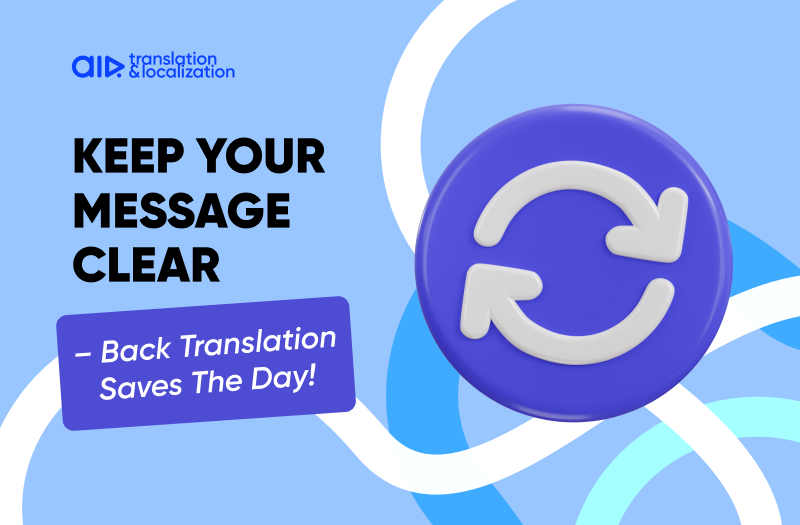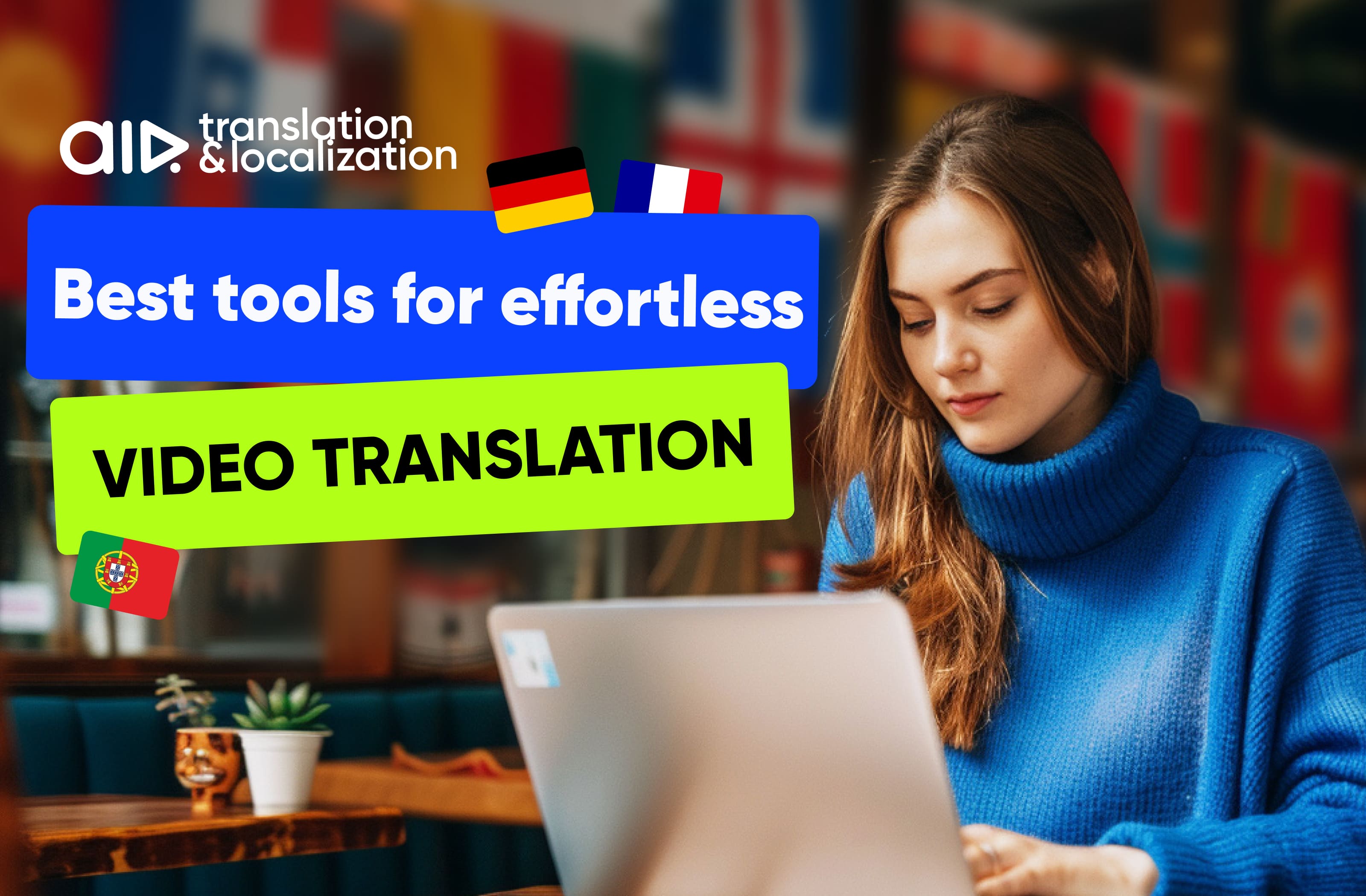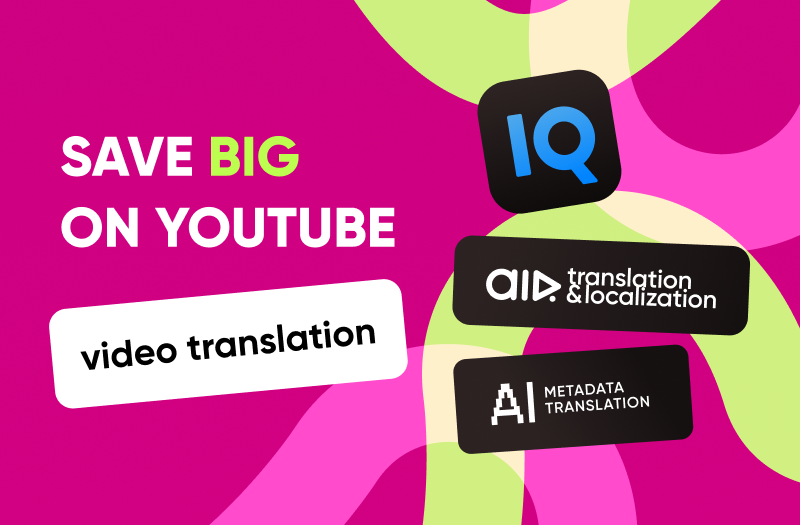Table of contents
Have you ever wondered, "How would I ensure my translation quality is good enough?" You’re not alone. As more creators and brands expand their reach globally, the need for quality translation services has become crucial. And when it comes to translating YouTube videos, ensuring translation accuracy is everything.
One foolproof method to guarantee your translation quality? Back translation.
In this article, we’ll dive into what back translation is, how it works, and why it’s an absolute must-have for maintaining translation quality assurance. We’ll also go over some small but impactful tactics to make sure your video translation accuracy is top-notch. Ready? Let’s go.
What is Back Translation?
Simply put, back translation is when a translated text is translated back into the original language. The goal? To compare the back translation with the original text and check for any discrepancies. Think of it as a double-check on your translation quality.
Let’s say you’ve translated the subtitles for a YouTube video from English to Spanish. By using the back translation method, you then take those Spanish subtitles and translate them back into English. The back translation won’t match word-for-word, but it should be close enough to help you spot any major errors or misinterpretations.
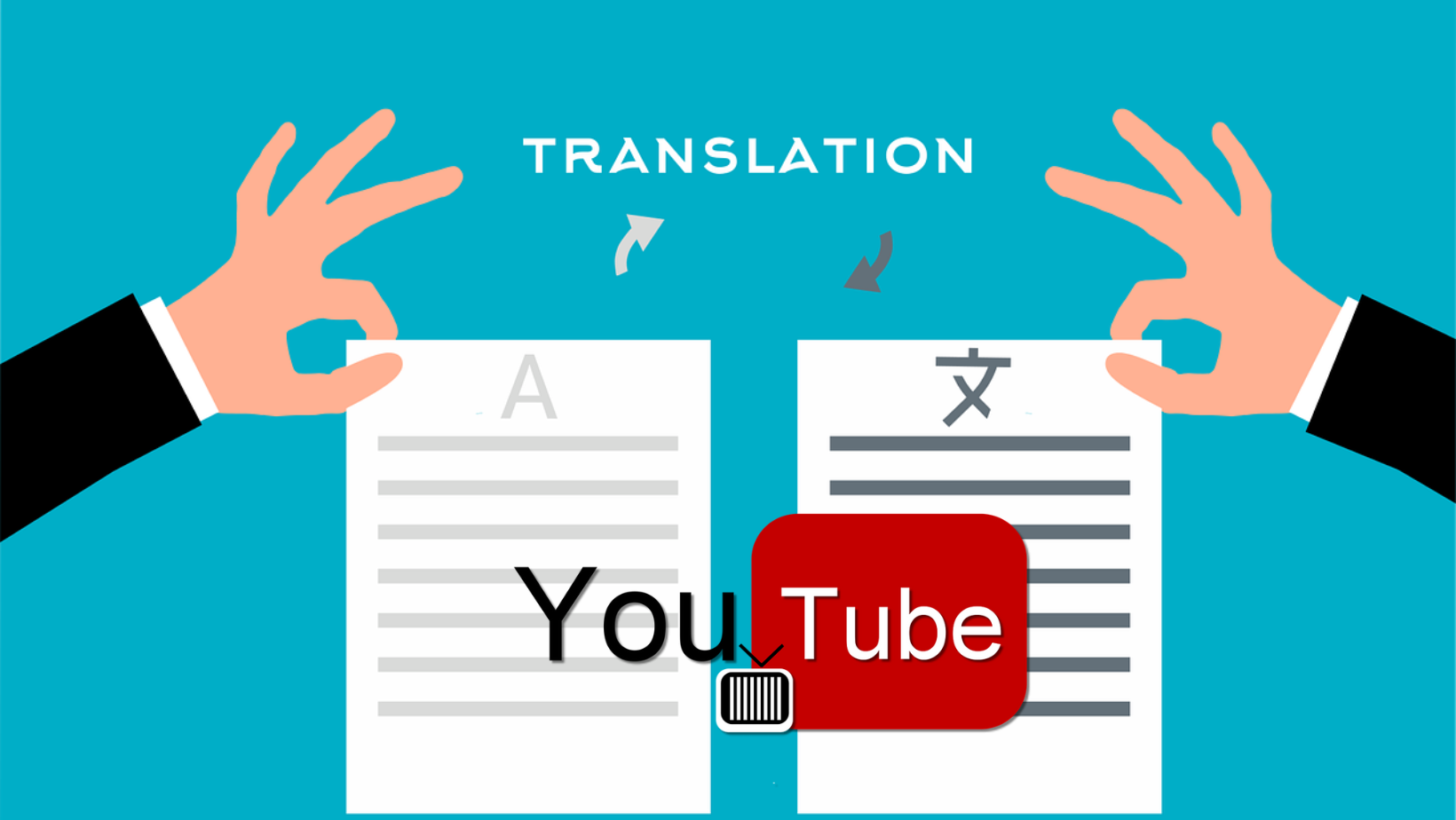
Why Use Back Translation for YouTube Videos?
When it comes to translation accuracy, especially for YouTube videos, back translation is like a safety net. Your viewers rely on accurate subtitles to understand your content. If those subtitles aren’t accurate, you risk losing them – and potentially damaging your reputation.
But it’s not just about getting the words right. It’s about ensuring your message, tone, and intent stay the same across languages. That’s where back translation really shines.
You’ve put so much effort into creating the perfect video. You don’t want to ruin that hard work with poor translations. Using a back translation service helps you avoid these pitfalls by catching errors before they go live.
YouTube Recommends AIR Translate
Choose a vendor trusted by YouTube and thousands of creators!
How Back Translation Works in 3 Simple Steps
Here’s how you can use back translation to check your translations and make sure everything is accurate:
- Start with a High-Quality Translation
Before anything else, ensure your initial translation is done professionally for both the source and target languages. This sets the foundation for high-quality content.
- Compare the Back Translation to the Original
Once the back translation is done, compare it to your original text. You’re not looking for an exact match, but rather ensuring that the core message and intent haven’t changed.
- Fix Any Discrepancies
If there are major differences between the original and back translation, those need to be addressed. It could be a misunderstanding or a missed cultural nuance. Either way, this step is crucial for translation quality assurance.
Back Translation Examples in Real Life
To give you an idea of how important back translation is, let’s look at some back translation examples:
- KFC’s Famous Slogan
KFC’s original slogan, “Finger Lickin’ Good,” when translated to Chinese, became “Eat Your Fingers Off.” Yikes! This error was caught through the back translation method. Can you imagine if that had gone live?
- Coca-Cola’s Slogan
Coca-Cola’s “Taste the Feeling” slogan was translated into French as “Sentir le goût,” which means “Feel the Taste.” When back-translated into English, the slogan changed slightly in meaning. This is a perfect example of how even small changes can impact the overall message.
In both cases, back translation caught these translation errors before they reached the public, saving the companies from embarrassing situations.

Small Tactics to Improve Your Video Translation Accuracy
Back translation is just one part of ensuring your translation quality. Here are a few extra tips to boost your video translation accuracy:
- Use Native Speakers for Back Translation
Native speakers understand the nuances of language better than anyone else. This helps you catch small but important differences in meaning, tone, or cultural relevance.
- Provide Context
When you send content for back translation, make sure you provide context. If your video includes industry-specific terms, cultural references, or unique phrases, explain them. This helps maintain the integrity of your message.
- Automate Where Possible, but Always Review
While AI tools can speed up the initial translation process, always do the back translation. This ensures that the cultural context and subtleties are captured for the right localization.
- Review Consistency
Ensure the style, tone, and terminology used in the translated content are consistent throughout your video. Check translation for any discrepancies and make sure the overall message remains clear and engaging.
Want to take your content global? AIR Media-Tech has helped creators reach hundreds of millions of subscribers by translating and localizing their content into over 50 languages. As a YouTube-recommended vendor, we handle everything – from translation and dubbing to tailoring content for local audiences. Get in touch with us to find the best strategy for your channel and watch your reach and earnings soar!
Back Translations for YouTube Videos
- Double-Checking Your Subtitles
When you translate your subtitles into different languages, how do you know the humor or emotion came through? Back translation can help you check if your original message is still intact after the translation. This way, you ensure nothing gets lost in translation, and your global audience enjoys your content just as much!
- SEO-Friendly Video Descriptions
Got video descriptions in multiple languages? Back translation can help you confirm that your SEO keywords and strategies aren’t lost in translation. It’s all about keeping your video discoverable no matter the language – so you keep ranking high in search results across the globe.
- Making Sure Dubbing Scripts Stay on Point
Planning to dub your video for different languages? Back translation helps you double-check the translated script to make sure the dialogue and story still flow naturally. This is key to maintaining the essence of your video, whether it’s a funny skit or a dramatic short film.
- Accurate Sponsored Content
Got a sponsor? When you’re translating sponsored content for your videos, back translation makes sure their message comes across exactly as intended in every language. It helps you avoid any mix-ups affecting your partnership and keep things smooth with the brand.
- Staying Compliant with YouTube's Rules
Want to make sure your video complies with YouTube’s guidelines in all languages? Back translation helps confirm that your localized content won’t break any rules. This extra step ensures your video stays safe from potential policy violations due to a translation slip-up.
These tips ensure your content resonates with viewers worldwide, keeping your original meaning clear and consistent.
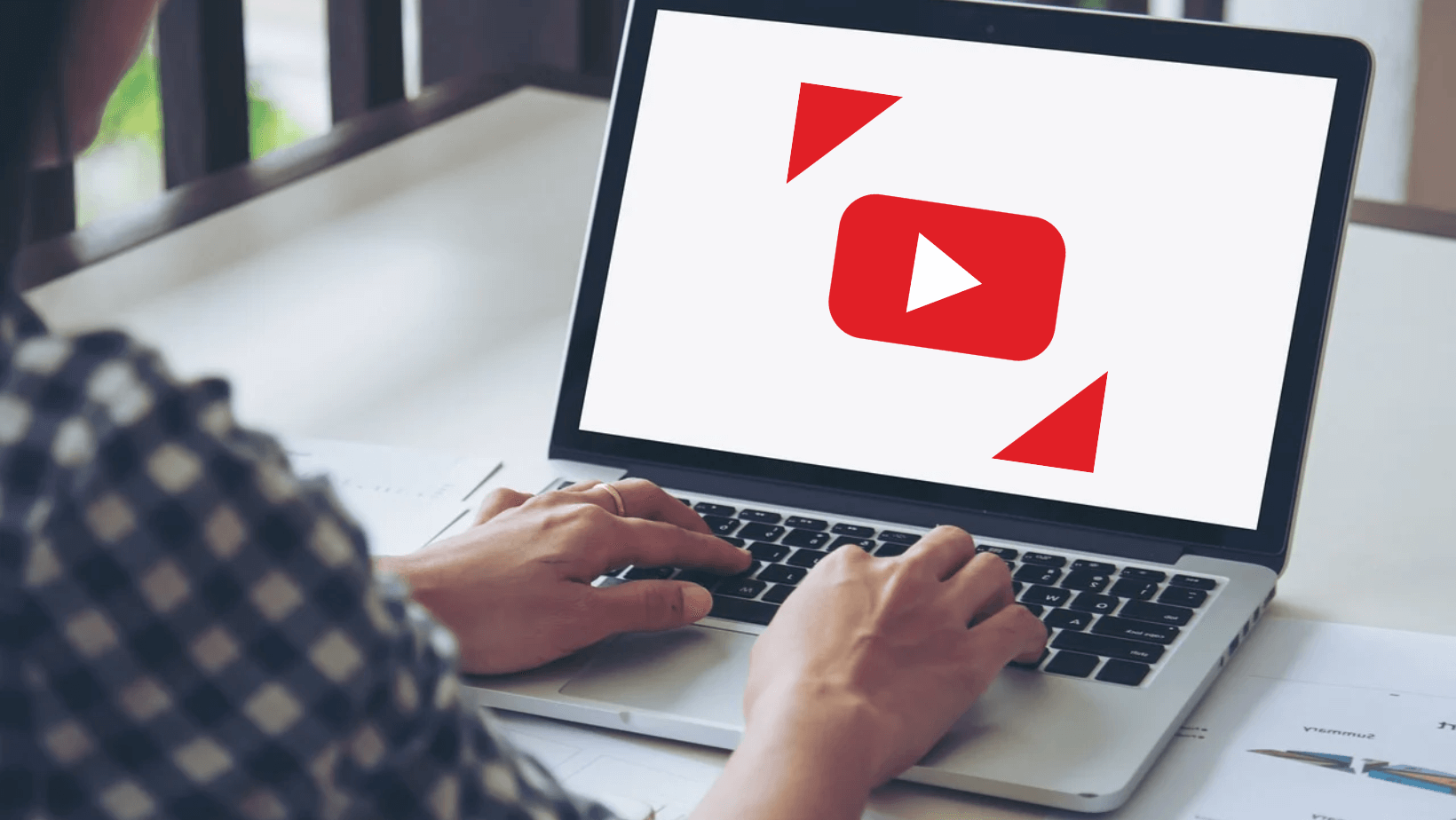
Quality Translation Services And Tools That Help You
DeepL is all about giving you super accurate, natural-sounding translations. It’s powered by AI and handles everything from casual texts to business documents with ease.
You can even tweak the tone to be more formal or casual, depending on your needs.
2. AIR Translation & Localization
This is a top-notch service for YouTube creators. It gives you high-quality, human translations and even dubbing, so your content can shine across different languages without losing its tone or personality.
Perfect for creators who want to reach a global audience without worrying about translations sounding off or awkward.
Our partners recently reached 125 billion YouTube views, achieving milestones of 100K, 1M, 10M, and 100M subscribers. AIR Media-Tech is the ultimate space for content creators, offering tools and solutions for every challenge you might face. Join AIR Media-Tech and grow faster with us!
3. Smartling
If you’ve got a ton of content that needs translating, Smartling is your best friend. It also helps big teams collaborate easily, making sure translations are consistent and spot-on.
You get real-time updates, so you always know where your project stands, and they make sure your key terms are translated correctly every time.
4. MemoQ
If you’re working on more complex projects, MemoQ is a go-to tool. It helps keep everything organized with features like translation memory and glossaries, so you never lose track of important terms.
It’s built for collaboration, which is perfect if you’ve got a team working on big projects.
5. MateCat
MateCat is a cool, free tool you can use online. It lets you do back translations quickly to ensure your original meaning holds up. And because it’s cloud-based, you can work with your team and get real-time feedback on translations.
It integrates with machine translation engines, so it works smoothly even for bigger projects.
These tools are a great mix if you need to check translation quality with back translation, whether you’re doing something quick and simple or working on big, professional projects!
When Should You Skip Back Translation?
Back translation is incredibly useful, but it’s not always necessary. For highly creative or idiomatic content – such as poetry or taglines – back translation can result in clunky or awkward phrasing. In these cases, transcreation (a more creative form of translation) might be a better option.
Also, for highly technical content, like medical or legal translations, it might be more efficient to rely on subject-matter experts rather than back translation. Accuracy is critical here, but it often requires a specialized approach.
If you’re looking to expand your YouTube content into new languages and ensure translation quality assurance, AIR Media-Tech has your back.
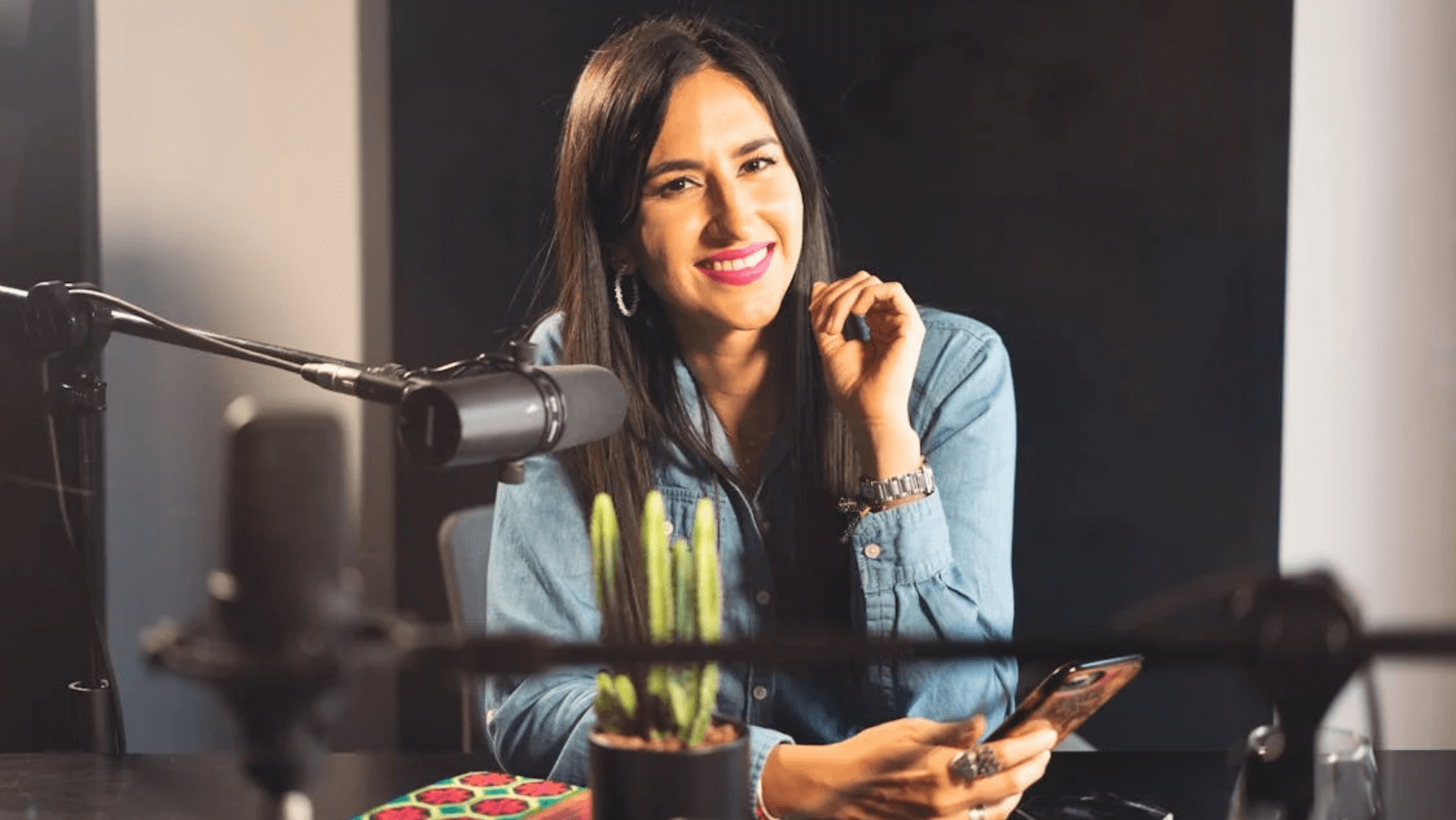
So, back translation is a foolproof method to check translation and ensure your video content is accurate and effective. Remember, accuracy matters. Take the time to run your translations through the back translation method, and you’ll be amazed at the difference it makes.
Ready to reach new audiences with confidence? Contact AIR Media-Tech today and we will help you take your channel to the next level!
